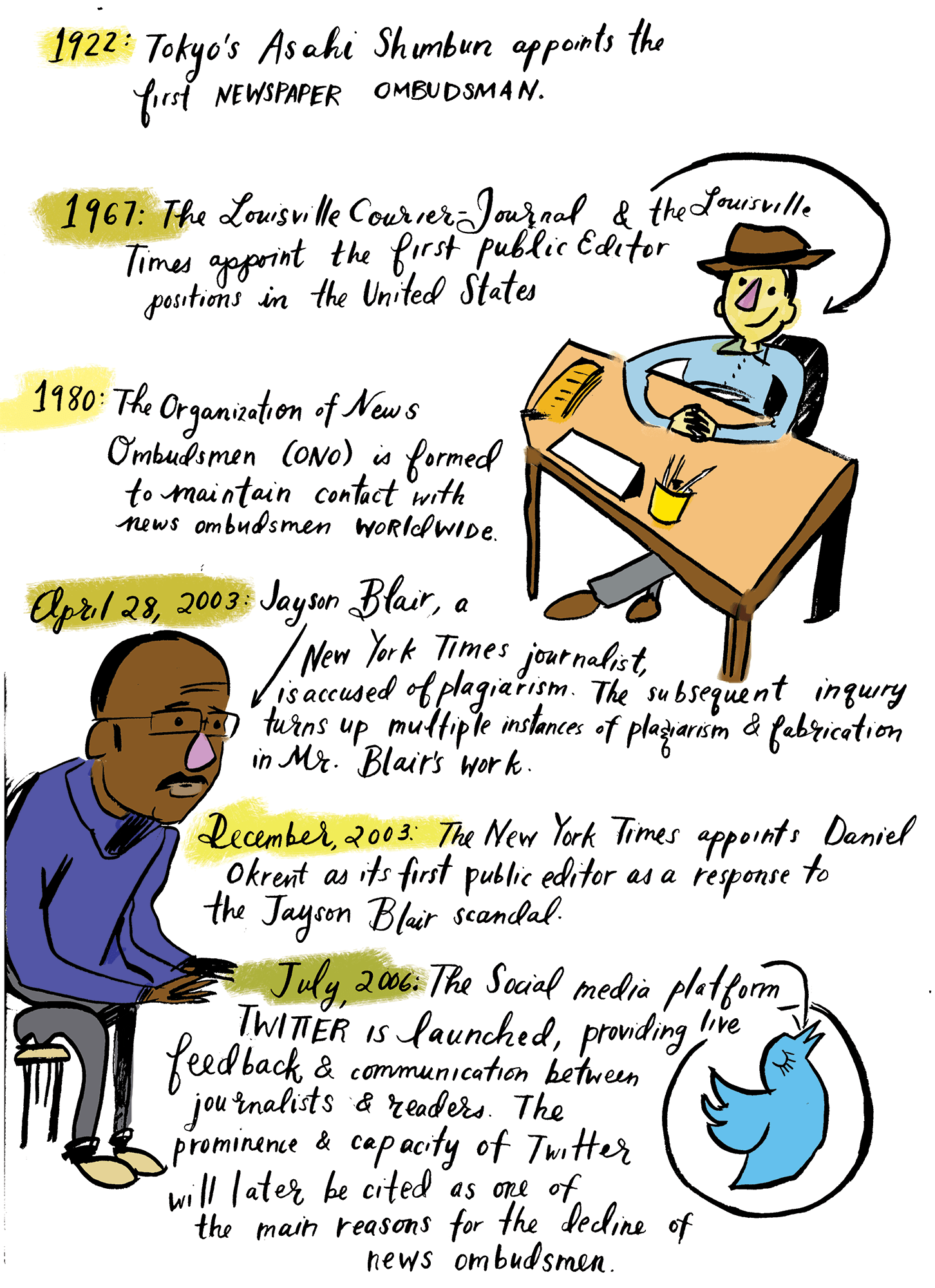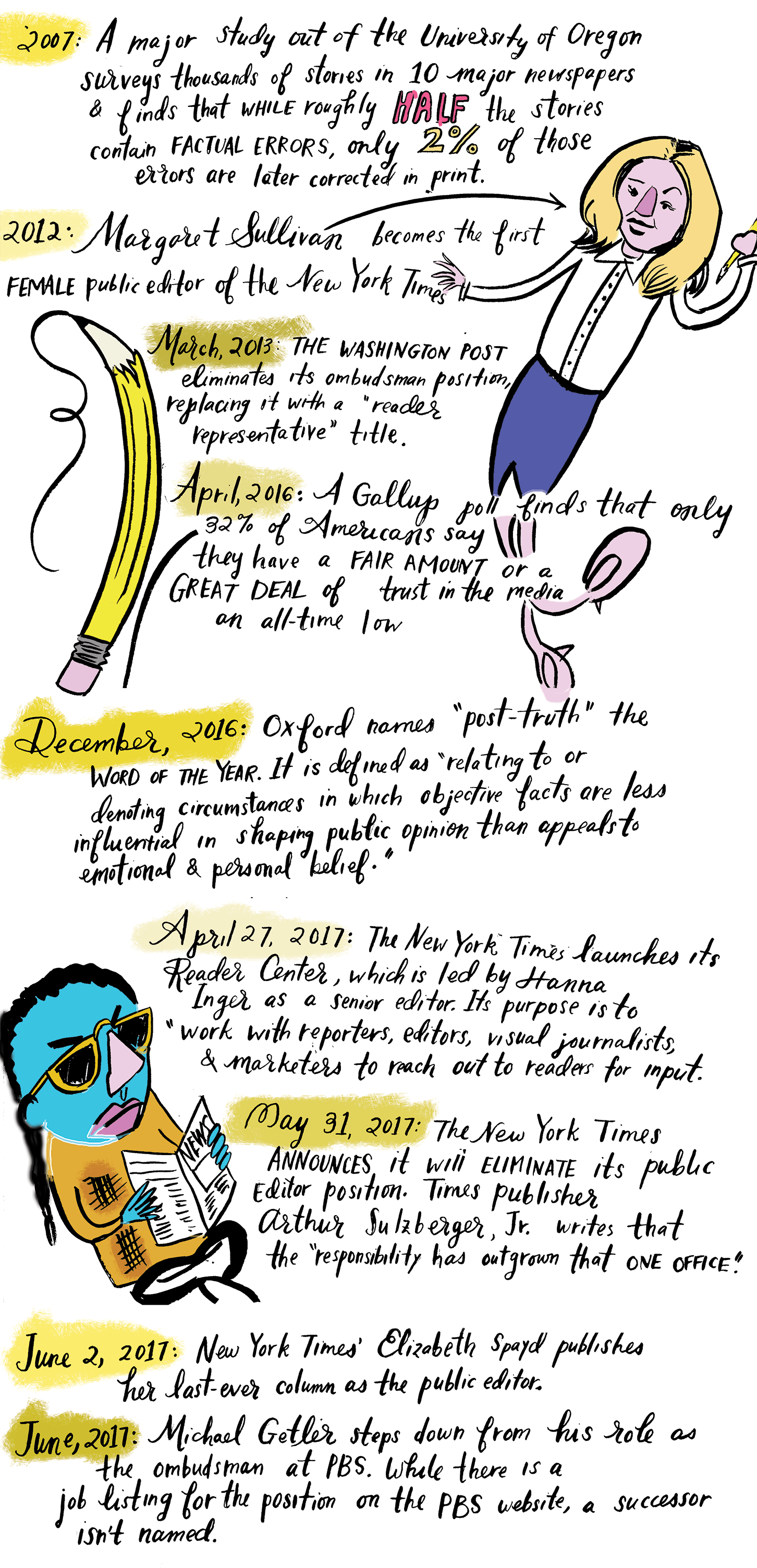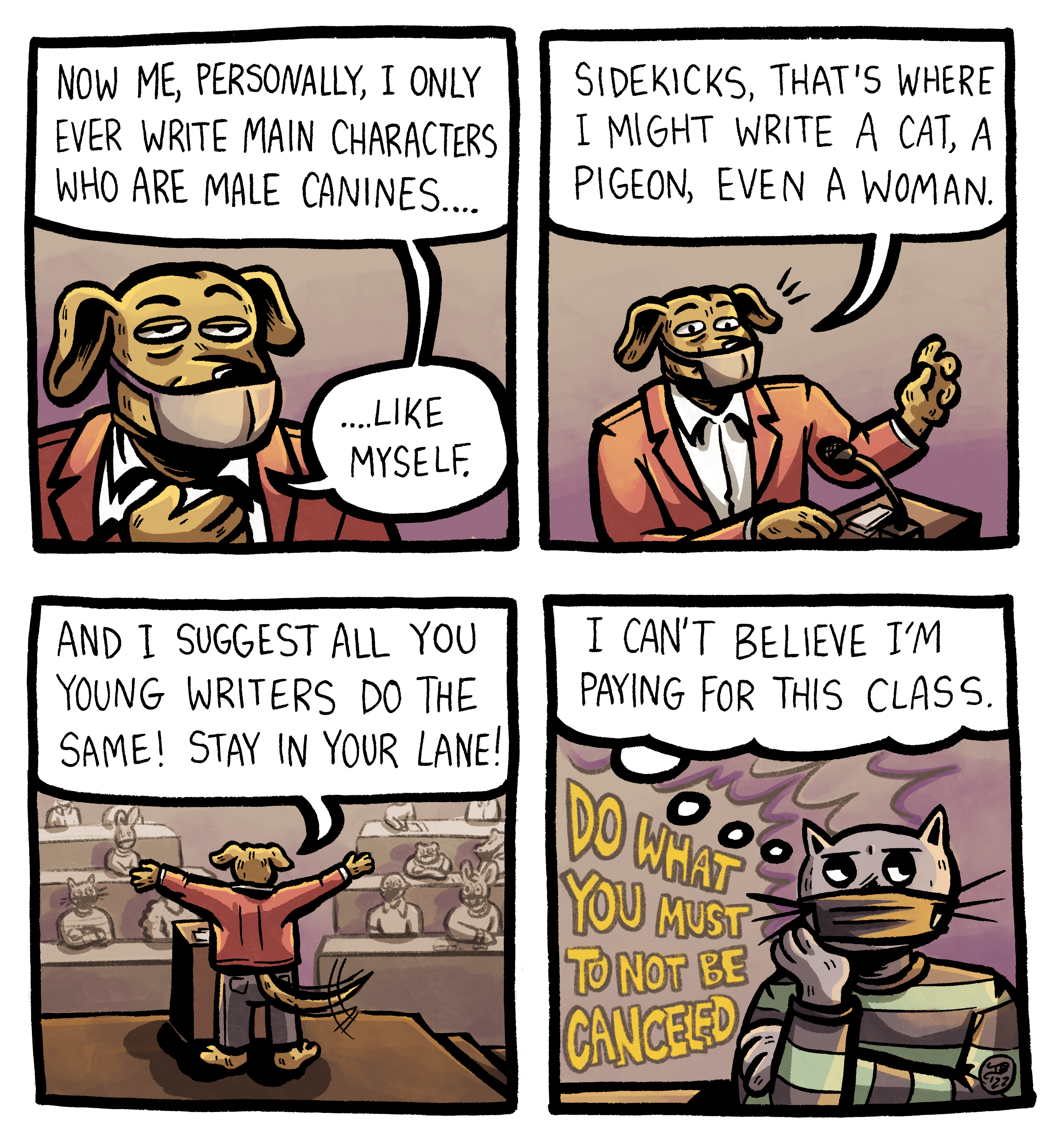The New York Times just eliminated its Public Editor position — and that’s a big deal, if not at least because it was one of the last ombudsman positions at a major newspaper. An ombudsman, officially, is an independent government official who is charged with representing the interests of the public by investigating complaints. At a newspaper, that’s translated as a person who reports on the problems within the journalistic entity where they work. And you’d think that in the age of fake news and Twitter allegations, the public editor would be more essential than ever.
But the Washington Post doesn’t have one; the Chicago Tribune doesn’t have one; the Wall Street Journal doesn’t have one. Television news networks don’t have one, and neither do Buzzfeed or Facebook or Twitter. We live in a he-said-she-said-they-said media world, and there’s no one officially left to referee.
To understand the rise and fall of this important position in the world of journalism, here’s a timeline of some of the most significant events in world history having to do with news ombudsmen.
























Thanks for writing and drawing this.